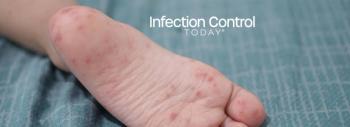
CDC Announces Safety Training Course for Healthcare Workers Responding to Ebola Outbreak
As part of a comprehensive and coordinated response to the 2014 Ebola outbreak in West Africa, the Centers for Disease Control and Prevention (CDC) is providing an introductory training course for licensed clinicians (e.g., nurses, physicians, and other healthcare providers) intending to work in an Ebola treatment units in Africa. This course will take place in the United States.
The primary purpose of the course is to ensure that clinicians intending to provide medical care to patients with Ebola have sufficient knowledge of the disease and its transmission routes to work safely and efficiently in a well-designed ETU. This course is the first step in preparing clinicians to work independently in an ETU. It is strongly recommended that, after completing this training, clinicians receive mentoring and coaching in an ETU designated for such training in an affected country, only then progressing to fully independent work in an ETU. The CDC course contains information from similar courses developed by Médecins Sans Frontières (MSF) and the World Health Organization (WHO) and is primarily designed to provide training for persons intending to deploy urgently in response to the current Ebola outbreak.
Learn more about the course at:
Criteria for admission to the course can be found at:
The sample course syllabus is available at:
The course will be held at the U.S. Federal Emergency Management Agency (FEMA) Center for Domestic Preparedness (CDP) in Anniston, Ala., a 90-minute drive from Atlanta. Contact
For more information about how to be a medical volunteer for the Ebola outbreak, see USAID’s website at:
Newsletter
Stay prepared and protected with Infection Control Today's newsletter, delivering essential updates, best practices, and expert insights for infection preventionists.






